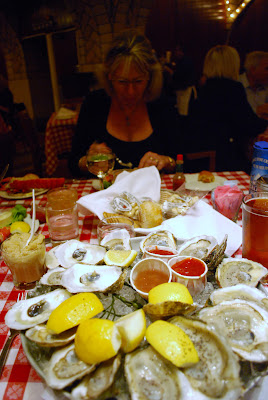
Photo: Marion van Dijk
Whether you grow your own or buy them at the supermarket; eat them as snacks or cook with their oil, olives are a magic ingredient in the kitchen and in life.
In Italy, where olives are commonly grown and pressed on family-sized plots using artisan methods, the plot is usually restricted to a single hill.
The slope and angle of the hillside and the sunlight varies considerably from place to place, so the olives grow and ripen differently. The hills that receive the most light yield riper olives and consequently darker oil.
It may be hard to believe, but nestled among our own hills and valleys are more than 40 commercial olive growers with more of the same in Marlborough. In fact for both Nelson and Marlborough in 2006, the olive harvest was 450 tonnes with about 190,000 litres of extra virgin olive oil produced.
By world standards, as for most things, we are a small player particularly compared with Spain, Italy and Greece, but the quality of what we produce is a different matter, attested to by the taste qualities of our excellent local product and our performance in international events.This is despite the fact that our climate does not really provide the hot summers that olives like so much.
It has been said that Nelson-Marlborough makes up for the lack of sustained heat with high sunshine hours and it has also been noted by the experts that Nelson-Marlborough is arguably the most important olive-producing region of New Zealand.
Most of the olives produced here are frantoio and leccino (Tuscan olives) with plantings of other varieties such as koroneiki (Greek) and barnea (Israel).There are also local varieties with names like J5 and GBO1 (not as exotic as the foreign names).
The local groves are on a range of different terroir from the Moutere clays to the Waimea alluvial gravels to Dovedale loam.Each area, and in fact each grove, produces olives with their own characteristics, even if the varieties grown are the same.The likely onset of early frost in some places means that the olives will be harvested earlier in some groves than others - this also significantly effects the end product.
All of this provides an exciting, flavourful and contextualised environment for us as consumers when selecting olive oils from our local producers.
The olive (Olea europuea) is native to the Mediterranean and has been cultivated there for thousands of years. There are many cultivars. Famed ones include the Greek kalamata, renowned as a table olive for eating. The kalamata olive has a PDO status (protected designation of origin), as does the famous amifissa olive that is used both as a table olive but also for oil extraction.Manzilla olives are Spanish as are picual - the olive that generates 20 per cent of the world's olive oil production as well as being widely eaten in Spain.
Olives are harvested from March to July in New Zealand, depending on the location of the olive grove and the type of olive. Harvesting olives is intensive and most olive groves use mechanical harvesters. Olives must be used rapidly (preferably within 24 hours)after harvest for either pickling or pressing as they need to be perfect and fresh to extract the best from them.
One important thing to know is how oil is graded and what you are paying for when you buy oil. Oil is produced through a centrifuge process and there is one pressing. The International Olive Oil Council has created the following standards. The higher the degree of free acidity the more likely the oil is damaged and unstable, and of lower quality. Half the oil produced in the Mediterranean is of such poor quality that it has to be refined to produce an edible product.
Extra virgin olive oil: must have less than 0.8 per cent free acidity plus other characteristics.
Virgin olive oil: must have less than 2 per cent per free acidity plus other characteristics.
Ordinary olive oil: must have less than 3.3 per cent free acidity plus other characteristics.
Refined olive oil: produced by refining virgin olive oils with high acidity or organoleptic faults (affecting the taste, colour, odour, feel) which are eliminated after refining. No solvents are used in the process, only charcoal and other filters.
Olive oils are as varied as wines and if you want to experience them first hand then take a drive to the outskirts of Nelson and begin your tasting experience. A visit to Villa Grove in Wakefield will offer you the opportunity to talk with Phil and Rachel Costello who are part of the Nelson Olives brand Oriwa as well as producing their own Villa Grove blend from their 700 frantoio, leccino and koroneiki trees.
Rachel describes the virtues of a good blend saying that an oil in balance will have harmony between the desirable qualities of fruit aromas, a bitterness that is not too astringent and a pepperiness that does not dominate.She points out how important it is for local consumers to understand the beauty of a local olive oil, rich and fresh compared with many of the imported oils that may well be past their use-by date and could have become rancid as there is no requirement for foreign producers to provide a use-by date on their products.
Drive in the direction of Tasman, stopping first at the Jester House for a delicious brunch and then on to Tasman Bay Olives. Through the glass window you can see the elegant Italian press and sample their Elovi oil, a frantoio single blend extra virgin olive oil, winner of a gold medal in 2008 at the Olives NZ National Awards.
They describe the oil as spicy with strong flavours and a distinct peppery taste. You can also buy Leccino Tasman Ridge extra virgin olive oil bottled or in bulk with a vintage of a couple of years ago featuring currently for only $16 a litre.This fruity, peppery, buttery, oil is an excellent price and even though there are some aficionados who would say olive oil needs to be consumed within 12 months of pressing, this oil shows otherwise. Another stop down the road on the Coastal Highway at Rosie's Grove where David and Debra Smith have an honesty box selling their oil for $20 a litre. These are just several examples of what is on offer around the district.
Many of the olive producers in the region use Olive Services Nelson to press their olives into oil.This is a co-operative venture and if you are a home grower and want to have your own oil, link in with friends to come up with a minimum amount of 50kg and your olives can be pressed for you.
What all of all this says is that it is time to try local olive oil. You can still use vegetable oil or cheaper olive oil for cooking but start using fresh local oil in salad dressings or drizzled over fish or chicken, soups or vegetables and start savouring the tastes.
Best of all about olive oil, other than the taste, is how good it is for you. Regular consumption of extra virgin olive oil increases HDLs, the good cholesterol, reduces plaque formation in your arteries and lowers blood pressure. What more could you ask for!

Photo: Marion van Dijk
LIL'S LUSCIOUS LIME SALMON
Fresh limes at Collingwood St Fresh Choice are delicious at the moment and only $6.99 a kilo. The Villa Grove Lime Oil is available from Villa Grove at Wakefield.
For two people.
300g salmon fillet
8 thin slices of haloumi cheese
1 red pepper
1/4 cup of green olives
Mesclun salad greens
1 lime
Red pepper flakes and sea salt
Villa Grove extra virgin olive oil, lime infused
A little of your favourite extra virgin olive oil
Turn your oven to 220 degrees Celsius. Cut the red pepper into 8 slices and drizzle with a little olive oil. Place in the oven and cook until just tender. Near the end of this add the haloumi cheese and cook until golden. Remove from the oven and keep warm.
Sprinkle the salmon with a little sea salt, some red pepper flakes and a little Villa Grove Lime Oil. Turn the oven on to grill and cook the salmon until just done or a little rare, according to taste.
Make a vinaigrette in the bottom of a salad bowl, with 3 Tbsp of the lime oil and the juice of a lime, add sea salt and red chilli flakes. Add the green olives, red pepper, plenty of mesclun greens and toss through with the haloumi. Serve immediately with the salmon. The vinaigrette makes a delicious sauce for the salmon as well.
Here is a recipe that asks for both green and black olives straight from the brine or you can use good quality black and green olives from the supermarket.
CHICKEN WITH TWO OLIVES
Roast a free-range chicken, sprinkled with a little extra virgin olive oil, at 180C until cooked. When cooked let it rest for 15 minutes then slice into portions and return to the roasting pan.
Make the following sauce:
4 cloves of garlic sliced finely
1/2 cup of green olives
1/2 cup of black olives
1/4 cup of best quality olive oil
1/2 cup of fresh Italian parsley or fresh basil if in season (or add 2 Tbsp of dried basil - but only use fresh parsley)
6 fresh Italian tomatoes or a 400g tin
1/2 cup of white wine
Freshly ground black pepper and salt to taste
Saute the garlic in half the oil until golden. Add tomatoes and cook until soft. Add the olives, herbs and white wine and cook until well integrated - about 20 minutes. Pour over the chicken and warm through.
Serve with mashed agria potato and a mesclun green salad with balsamic vinaigrette using the oil. Drizzle the remainder of the olive oil over the potato mash.
OLIVE TAPENADE
2 cups of green olives
1 clove of garlic
2 anchovies
2 Tbsp of capers
1/4 cup of flat leaf parsley
Zest of a lemon
Salt and pepper
3-4 Tbsp of extra virgin olive oil
Process the ingredients in a food processor. Add the olive oil slowly to form a smooth paste.
OLIO SANTO (HOLY OIL)
Try this on lots of dishes - experiment!
2 cups of best quality extra virgin olive oil
15 fresh basil leaves
5 whole hot chillis
Pour the oil over the basil and chillis. Seal the jar tightly and store for 15 days and then use with as many things as you can think of that could use some zing.

Photo: Marion van Dijk







